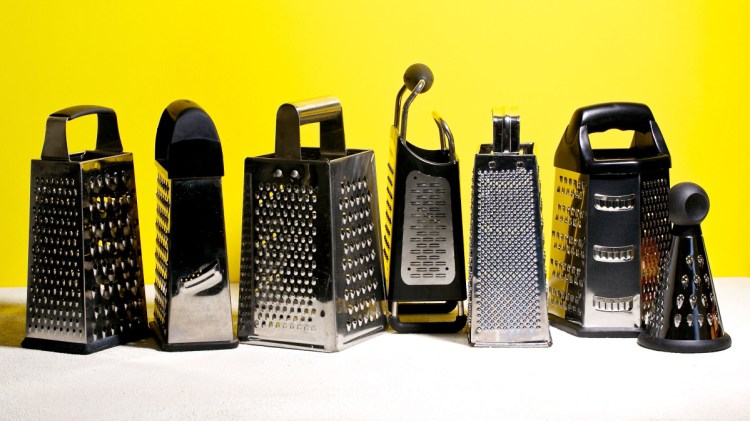If you own the most typical type of box graters, it has four sides. You probably routinely use only one of them – or maybe two. You might almost exclusively use it to shred cheese.
There’s no shame in that. I’m pretty much the same way.
Still, there are at least a few more things you can do to get the most out of your box grater. It’s time to start giving all four sides a workout.
• The largest shredding holes. These typically take up one of the wide sides of the grater. If you are grating cheese, this side is probably where you are going to do it most of the time. Hard (cheddar) or soft cheeses (mozzarella) are both possibilities. Freeze the cheese briefly to make it easier to grate. You can also lightly spritz the grater with cooking oil spray for smoother shredding and easier cleanup.
This side is useful for produce, too. Grate apples for oatmeal or muffins. Carrots and zucchini destined for muffins, cakes, quick breads or fritters work well. If you want onion that melts into a tomato sauce, grate it rather than chop it. Grated tomato is what you need for a fresh, bright sauce or salad dressing. Grated frozen butter is perfect for quickly and evenly incorporating into pie crust and biscuits.
• Smaller shredding holes. Use this side for finely grating hard cheeses that you still want to be in separate but thin pieces, such as Parmigiano-Reggiano to sprinkle on top of pizza or pasta. Finely grated Parm is also great for using in breading for chicken and eggplant, as well as a baked topping for bread. For an easy, attractive dessert garnish, pull out a chunk of chocolate to grate. You can also make bread crumbs using hardened stale or toasted bread.
• Rough, raspy holes. For when you really need to chew through something, the teethlike edges of these small holes are ideal. Think citrus zest, garlic, nutmeg and hardened brown sugar. For cheese “dust” that will really melt into a sauce or soup, grate it here. To get potatoes pulpy for latkes, this is the place.
• Slicing holes. One or several, depending on the grater. These are not necessarily a replacement for a sharp knife or mandoline. But they are an option, especially for relatively small amounts of food. You can use the slots to make large curls or slices of cheese that will stand out in a salad. Make little half moons or planks of zucchini for a salad or quick saute. Lightly dress slices of cucumber for a refreshing side. Anything too firm or too soft, however, probably won’t cut cleanly, which is why I recommend more watery veggies here (firm, but not too firm).
• The entire tool. Use the bottom edge (remove the rubber or silicone band if there is one) to cut out scones, biscuits and firm cookie doughs. Pile ingredients through the top to use as a mold for a showstopper salad.
Send questions/comments to the editors.



Comments are no longer available on this story